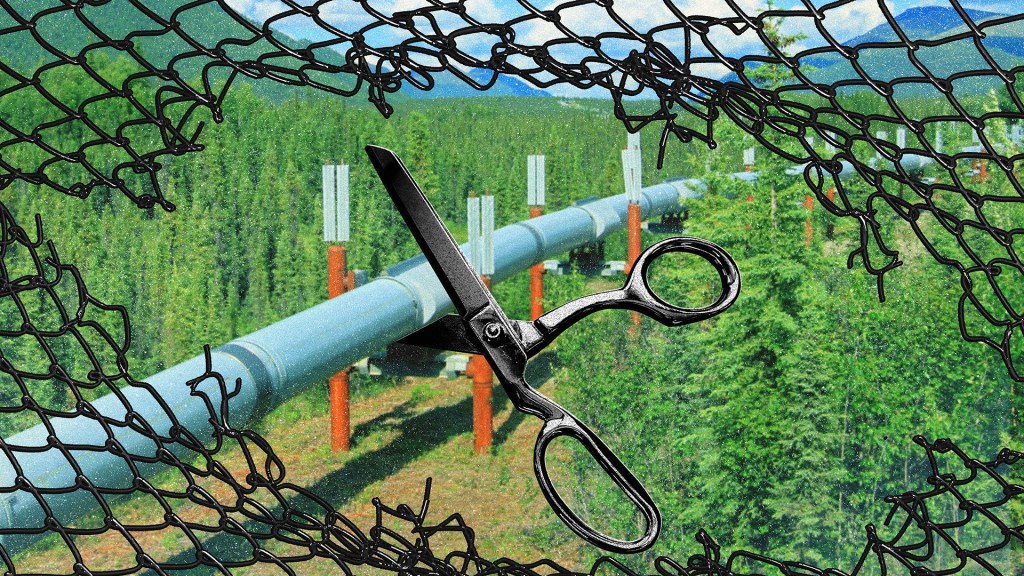The Keystone XL oil pipeline could put up to 110 million tons of additional climate-heating CO2 into the atmosphere every year for 50 years, according a study published Sunday in the journal Nature Climate Change.
If Keystone XL was a country, its 110 million tons of CO2 emissions would be comparable to those of the Czech Republic, Greece, and a number of other mid-sized European nations. And it could have a real shot at making the top 35 worst carbon polluting countries in the world.
Videos by VICE
The study notes that 110 million tons of CO2 is four times more emissions than the US State Department’s highest estimate for the controversial pipeline, which is currently undergoing an environmental review.
The State Department failed to account for the potential emissions from the increase in the global supply of oil, said study co-author Peter Erickson, a researcher with the US office of the Stockholm Environment Institute (SEI), an independent international research institute.
This new study is an update to an SEI working paper Motherboard reported on last December. At that time the estimated CO2 emissions from Keystone were 93 million tons, but that’s climbed higher with the benefit of updated information.
“This time it’s gone through the ringer of peer-review and is a far clearer and more direct version of the previous paper,” Erickson said in an interview. “It’s also generated a lot more media interest this time.”
The study shows how Keystone XL’s projected daily volume of 830,000 barrels of Canada’s bitumen oil could slightly lower oil prices on the global market and increase global consumption. More precisely, for every barrel of increased production, global oil consumption could increase by 0.6 barrels owing to the incremental decrease in global oil prices, Erickson said.
This finding is potentially crucial because of President Obama’s prior statement that he will only approve Keystone, “if this project does not significantly exacerbate the problem of carbon pollution.”
The decision remains largely in Obama’s hands because Keystone XL crosses national borders. The current plan is for a 1,200-mile, 36-inch diameter pipe to be built from Hardisty, Alberta to Steele City, Nebraska. The $7 billion pipeline will bring tar sands bitumen from under the frozen forests and lakes of northern Alberta to the world market, and will help the region’s booming oil operations expand even further. XL is part of a larger 2,500-mile Keystone pipeline system that terminates on the Texas Gulf Coast and is owned and operated by energy company TransCanada.
In 2012, Obama rejected TransCanada’s application because the pipeline route was through Nebraska’s environmentally sensitive Sandhills region. A few months later, TransCanada re-applied with a new pipeline route. The State Department is now doing an environmental review using energy consulting company Environmental Resources Management, which is expected to be completed next year.
Building more oil infrastructure is exactly the wrong thing to be doing when the world is struggling to reduce CO2 emissions. The SEI report pegs global investment in oil and gas infrastructure at $700 billion per year for the next 20 years, based on data from the International Energy Agency, along with considerable investment in coal.
That investment will only burn through our carbon budget faster than we are now. According to the IEA’s 2013 World Energy Outlook, which is one of the top energy reports annually, some two-thirds of our proven fossil fuel reserves must stay in the ground to avoid heating the planet by more than two degrees Celsius by 2050. That’s a threshold set by the US and other nations who have made climate change mitigation pledges.
However, SEI study co-author Michael Lazarus said last December that the CEOs, board members, bankers, and government officials who make the decisions to build new infrastructure won’t even talk about cutting back. “It seems to be off limits to talk about cutting back on fossil fuel extraction,” he said.
Presumably, these folks also aren’t talking about the disastrous environment all of us will be trapped in if we heat the planet by those two degrees and beyond. We can’t quit oil immediately because it will take time to build an alternative energy infrastructure. However, at this point it makes little environmental sense to build new pipelines like Keystone XL to increase access to tar sands bitumen, the world’s dirtiest form of oil.



